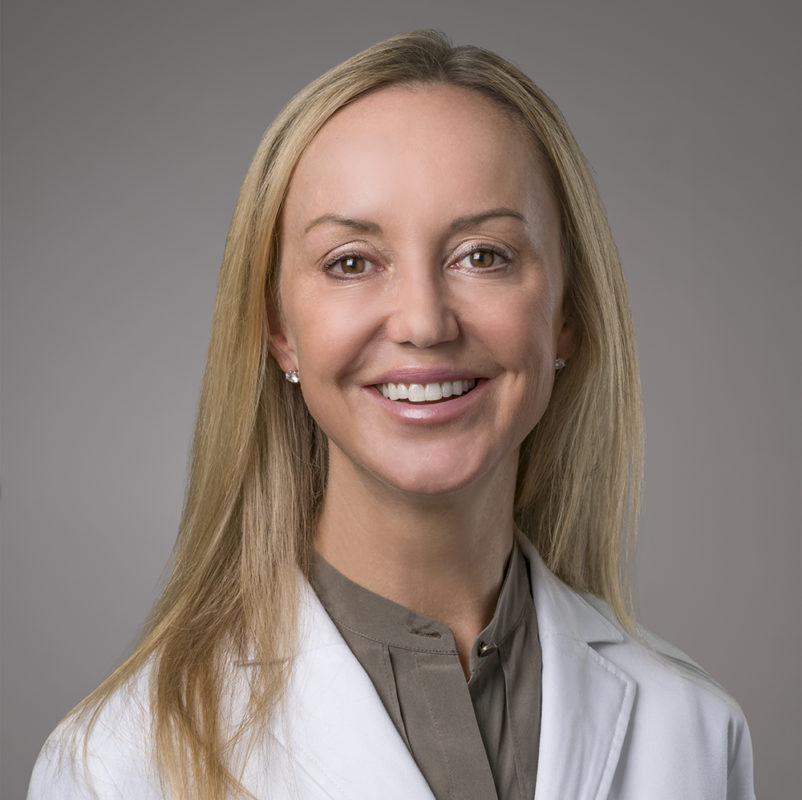Every May, Board-Certified Dermatologists and Dermatology Advanced Practitioners spend extra time raising awareness about skin cancer, the most common cancer in the United States. It is a time to educate and inform our community about all things related to skin cancer.
Melanoma Monday is also recognized during May and falls on the first Monday of the month. Melanoma is the third most common skin cancer type, and when caught early, the five-year survival rate is 99%. Unfortunately, the number of new melanoma cases in the past decade has increased by 31%. According to the Skin Cancer Foundation, most melanomas are caused by UV exposure which is caused by sun exposure and indoor tanning as well.
A critical factor in the successful treatment of skin cancer is early detection. Monthly self-exams are important to catching melanoma in its early stages. Any abnormalities found during your self-exams, particularly what Dermatology Providers refer to as the ugly duckling, should be evaluated as soon as possible. For additional guidance on what to look for during self-exams refer to the ABCDEs of melanoma.
- Asymmetry – an asymmetric spot in the body means that one half of the spot doesn’t match the other half.
- Border – the border of the spot is irregular.
- Color – the spot has two or more colors to it.
- Diameter – the diameter of the spot is larger than the end of a pencil eraser.
- Evolving – an existing spot that starts to change or evolve.
This Melanoma Monday, Dr. Whitney Hovenic was featured on channel 2News as part of their Health Watch segment. Dr. Hovenic briefly spoke about melanoma and the importance of early detection. Read Dr. Hovenic’s interview below and follow her advice to perform monthly self-exams.
NEWS ANCHOR: Well, the first Monday of May is known as Melanoma Monday, to spread awareness about skin cancer and there is encouraging news if you catch melanoma early.
- WHITNEY HOVENIC: Most melanomas are cured if they’re caught early. So, if you get either a Stage I melanoma or what we really like is something called melanoma in situ. Meaning that it has not spread beyond the top layer of the skin. The cure rates are excellent. Generally, you have surgery and that’s it!
N: Dermatologist Dr. Whitney Hovenic says you do have to be followed very closely; however, afterwards, because melanoma patients have a higher likelihood of getting another melanoma in their lifetime.
In tonight’s Ask the Doctor segment at 5 p.m., I’ll take you to the Skin Cancer & Dermatology Institute for a closer look at how skin cancer is found and how to prevent it.
The Skin Cancer & Dermatology Institute brings you patient-centered, world-class dermatological care with 10 locations in the Reno-Tahoe area. We specialize in Medical Dermatology, Mohs Skin Cancer Surgery, and Cosmetic Dermatology. To book an appointment online click here.
ABOUT OUR PROVIDER
Whitney Hovenic, M.D., is a Fellowship-Trained Mohs Surgeon and Board-Certified Dermatologist. After graduating from the University of Nevada School of Medicine, she completed her residency at the University of Missouri and went on to receive extensive training in lasers and Cosmetic Dermatology at the University of California, Irvine. Dr. Hovenic is one of only four Fellowship-Trained Mohs Surgeons in Northern Nevada. She specializes in Mohs Surgery and skin cancer treatments, though she has a special interest in Cosmetic Dermatology and the use of lasers for medical and cosmetic purposes.


